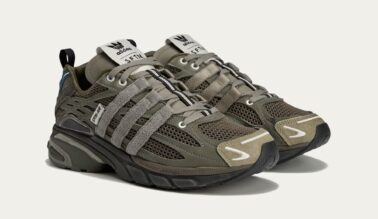This post may contain affiliate links. Please read our disclosure policy.
Recently on ESPN’s “His & Hers,” anchor Sarah Spain expressed a theory suggesting that Derrick Rose’s injuries are linked to him wearing adidas shoes. Sadly, other ‘experts,’ footwear fans or basketball watchers have conjured up similar calculations, with really no backing evidence or points of proof.
Spain’s theory is built off a few notions. First, she questions the ‘lighter than yours’ campaign that adidas pushed in performance basketball. This campaign was originally ran in 2011, with the tooling and weight of the current D Rose 5 being far different than that of the Crazy Light. The second notion is that injury issues stem from Derrick switching shoes often throughout the season. While Derrick does switch shoes, his ‘.5’ signature updates are no different than the ‘Elite’ editions that Nike or Jordan Brand athletes switch to later in the season. Lastly, Spain questioned the lockdown and support of the shoe. The lockdown on the D Rose 5 is not substantially different from any of its peers on the market, and Rose also wears ankle braces under his shoes as an added measure for support.
Naturally, Derrick Rose and his nagging injuries have been the biggest talking point of this still young NBA season and obviously ESPN or any other network for that matter is going to discuss it at length and often sensationalize it. That’s modern media, we get it. What’s unfortunate is that the stigma tied to adidas– or any brand that isn’t Nike or Jordan– being responsible for injuries still exists.
On numerous occasions, we’ve dissected this issue and disproved this stigma at length. In 2012, following Kevin Ware’s NCAA tournament injury and numerous ACL injuries during that NBA season, we highlighted that an array of basketball players had fallen to similar injuries in an array of brands. Recently, we revisited the issue by looking at a history of high profile players getting injured in celebrated sneakers. The findings were that injuries occurred in all the top sneaker brands, and that the common thread in the injured athletes was carrying a heavier workload on the court, not wearing a lackluster sneaker. If you read a similar piece by Sole Collector, you will find our peers feel the same way.
Sarah Spain isn’t the only person to connect footwear to injuries, other journalists, athletes or fans have done the same. However, history disputes the fact that any one brand is responsible for injuries and that stigma needs to stop.
Lead image by Alex Goodlett/Getty Images via Zimbio




